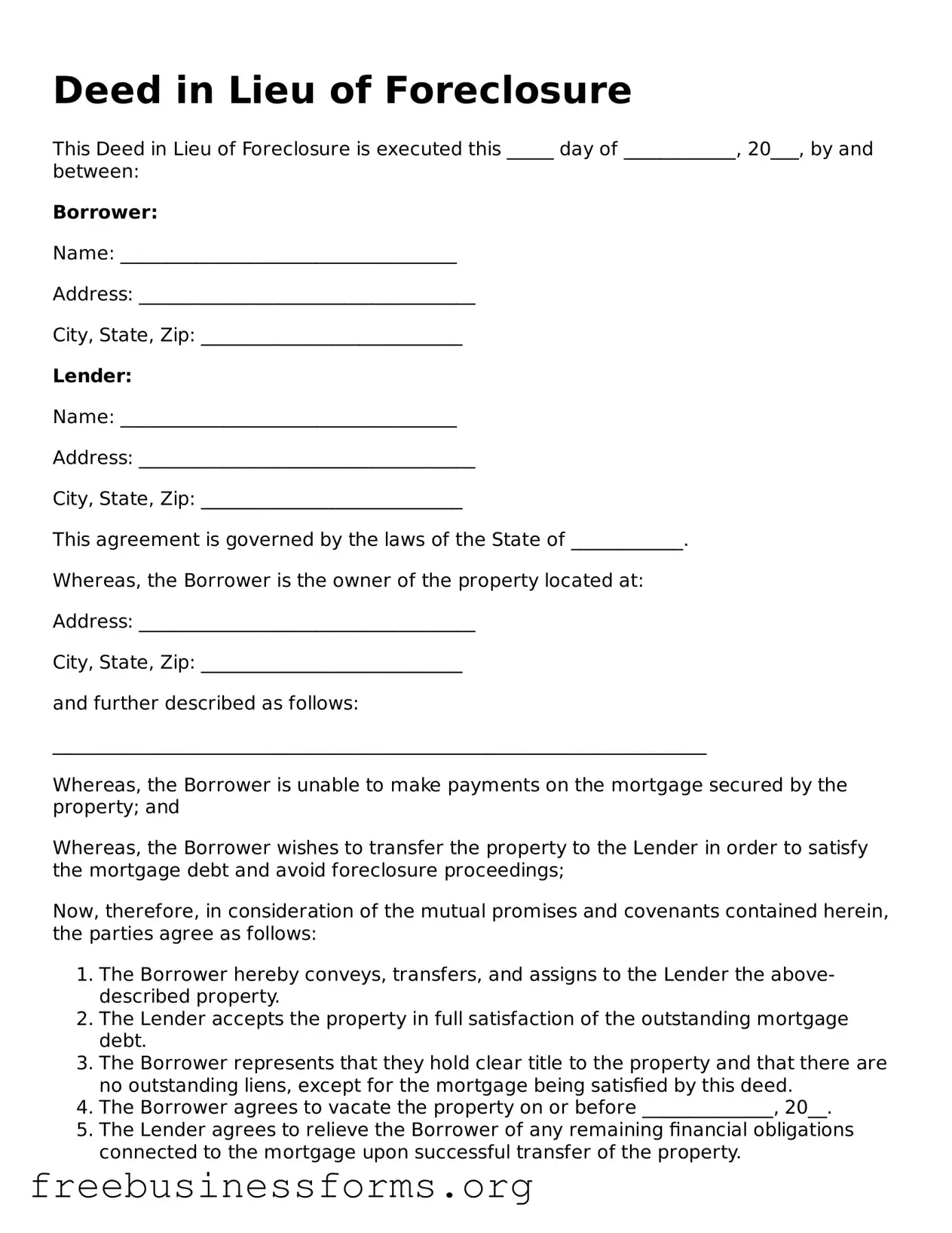Deed in Lieu of Foreclosure
This Deed in Lieu of Foreclosure is executed this _____ day of ____________, 20___, by and between:
Borrower:
Name: ____________________________________
Address: ____________________________________
City, State, Zip: ____________________________
Lender:
Name: ____________________________________
Address: ____________________________________
City, State, Zip: ____________________________
This agreement is governed by the laws of the State of ____________.
Whereas, the Borrower is the owner of the property located at:
Address: ____________________________________
City, State, Zip: ____________________________
and further described as follows:
______________________________________________________________________
Whereas, the Borrower is unable to make payments on the mortgage secured by the property; and
Whereas, the Borrower wishes to transfer the property to the Lender in order to satisfy the mortgage debt and avoid foreclosure proceedings;
Now, therefore, in consideration of the mutual promises and covenants contained herein, the parties agree as follows:
- The Borrower hereby conveys, transfers, and assigns to the Lender the above-described property.
- The Lender accepts the property in full satisfaction of the outstanding mortgage debt.
- The Borrower represents that they hold clear title to the property and that there are no outstanding liens, except for the mortgage being satisfied by this deed.
- The Borrower agrees to vacate the property on or before ______________, 20__.
- The Lender agrees to relieve the Borrower of any remaining financial obligations connected to the mortgage upon successful transfer of the property.
IN WITNESS WHEREOF, the parties have executed this Deed in Lieu of Foreclosure as of the day and year first above written.
______________________________
Signature of Borrower
______________________________
Signature of Lender
______________________________
Witness
______________________________
Notary Public
My commission expires: ________________
